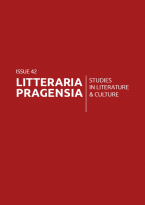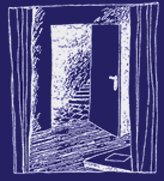
|
21.42 Transformation, Translation, Transgression: Native American Culture in Contact and ContextEdited by: Raeschelle Potter-Deimel and Klára Kolinská Volume: 21 Issue: 42 December 2011 |
Contents
|
Raeschelle Potter-Deimel
,
Klára Kolinská
Introduction
|
1 |
|
Ana Paula da Silva Machado
A "Different World": Indigenous Spirituality at the Root of Conflict with Western Thought
show abstract
When two conflicting worldviews come into contact, tension is bound to result, and eventually violence, and conquest of one by the other. It is not so much a matter of the Darwinian-inspired notion of the survival of the fittest, but perhaps merely of "survival," tout court, in the face of predatory invasion. The Indigenous perception of the world, as a whole made up of infinite interactive elements, like a gigantic spider's web, where everything acts upon and depends on anything else, conducted their cultures onto a circular path on an immense spiral, rather than onto a hierarchical line of evolution, or a mere sequence of chronological events. As a matter of fact, chronos played only a minor role in the theatre of their lives, whereas mythic time and space played a major role. Out of this mythic, eternal, dreamtime area came prophecy. And in prophecy is rooted much of present-day cultural affirmation. Could this be the vision of the Ghost-Dancers? Or the path to Paradise Regained for mankind as a whole? |
16 |
|
Pauline Turner Strong
Transformations in Anthropological Scholarship on Native North America, 1970-2010
show abstract
The social, political, and intellectual conditions for ethnographic research among Indigenous Peoples in North America have changed dramatically over the last half- century. This article considers some of the most important transformations in ethnographic research and representation, including a turn to collaborative and activist research methods, reflexive and multivocal forms of representation, and multi-sited and transnational research settings. It also considers the centrality to current research of Indigenous struggles for rights, resources, recognition, sovereignty, language revitalization, economic development, and self-representation. |
28 |
|
Raymond Orr
The Progression of Indigenous Stasis: Universality and Ambivalence Regarding Change
show abstract
The disparity between how scholars in both the social sciences and humanities imagine that communities live and how such communities actually live can sometimes be large. Research studies on Indigenous Peoples do not entirely escape this inconsistency. This article focuses on multiple issues revolving around the concept of change and the difficulty of addressing the ambivalence about change held by communities and scholars alike. It first examines some of the more standard approaches scholars take when addressing cultural preservation in Indigenous communities. Next, the essay reviews certain conversations and perspectives within Indigenous communities that reveal ambivalence over the future and who is responsible for it. To extend this analysis, this review concludes with an exploration of how such conversations can be difficult to recognize, paying attention to how and why scholarly discourse may - relatively easily - selectively overlook these conversations even when such scholarship is ethnographic and based in the communities themselves. Overall, this article explores perspectives around social change and how American Indian reservation communities might discuss these perspectives while, concurrently, scholars overlook these perspectives in research. My analysis attends some of the more fundamental assumptions about uniformity that scholars make about Indigenous populations, and the possible divisions that may, in fact, exist in these communities. In particular, I argue that, from the perspective of Indigenous studies, taboos around the reporting of unflattering perspectives of authenticity, generational conflict, and other passé subjects have hidden potential divisions over issues relating to preservation. |
40 |
|
Donna L. Akers
Decolonizing the Master Narrative: Treaties and Other American Myths
show abstract
For more than a century, the US government seized all the lands now called the "United States" by procuring 'treaties' that it has represented as valid agreements or contracts obtained through international norms of treaty-making. However, the method created by the US to obtain Indian ‘treaties' deliberately omitted key procedures used between Western nations to assure mutual consent and honest practices. This method differed so significantly from the standards and norms of international practices that it constituted an entirely unique system reserved for use against Indigenous peoples in North America, a racist foundation for all contemporary relations between the US government and Indigenous nations and peoples. The Indian Treaty system was the foundational tool of colonial empire used by the US government to obtain the enormous wealth of Native Americans, impoverishing them forever and forcing them into dependence on American 'generosity.' |
52 |
|
Sabine Lang
Transformations of Gender in Native American Cultures
show abstract
The themes of transformation and ambiguity that pervade Native American oral traditions and concepts of the supernatural resonate in the life cycles of individuals as well. The institution of two-spirit (formerly referred to as "berdache"), where individuals partially or completely take up the social role of the opposite sex, provides a striking example of this. Just as there is often no clear distinction between animate and inanimate, human and non-human in the natural world, humans may be neither men nor women, or both, or may become transformed from one gender into another upon the agency of the supernatural or due to their own preferences. This contribution will explore the status of women-men and men-women in Native American cultures within the context of world views that appreciate and recognize change, transformation, and ambiguity as essential features of the nature of things. The manifestation of both masculine and feminine traits, or the discrepancy between physical sex and gender role, was thus (at least traditionally) generally not viewed as deviant but as an expression of an individual's being, or even as a special gift bestowed upon him or her by the supernatural. |
70 |
|
Chad Hamill
Catholic Expressions of Indigeneity: Indian Hymns of the Salish and Coeur d'Alene
show abstract
During the period spanning the mid-to-late nineteenth century, the Coeur d'Alene and Salish tribes of the Interior Northwest US underwent a seemingly radical transformation. In the decades following the arrival of the first Catholic missionaries in the 1840s, a majority of the Salish and Coeur d'Alene people freely adopted the Catholic faith. This transformation did not begin with the arrival of missionaries, however, but took root a century before with the vision of Circling Raven and Shining Shirt, who foretold the coming of the "Blackrobes." Still, acceptance was anything but assured. Missionaries found themselves laboring to strike a balance between Roman Catholicism and the Indigenous worldview of their Native congregations, a negotiation that took a number of forms, including Catholic hymns in the Salish language. More than representing a simple process of translation designed to indoctrinate, I will argue here that the Indian hymns among the Salish and Coeur d'Alene were very quickly and consciously embodied by the People, becoming authentic cultural expressions of indigeneity that carry forth to the present. |
82 |
|
Alice Sukdolová
Towards the Randomness of the Radical Concepts of Spaces in Daniel Deronda
show abstract
The spatial analysis of George Eliot's last novel Daniel Deronda (1876) focuses on three main aspects of the dislocation of space, its emptiness and randomness and finally on the inner spaces of the characters' mind, with respect to Eliot's romantic visions of spaces that become open towards the infinity of the sea at the end of the novel. In Daniel Deronda the characters shift from the physical space, represented by landscape, towards the dimension of the inner spaces of the mind, reflecting Eliot's Romanticism, elaborating the multiplicity of images and visions (Deleuze). The space of the novel is viewed as a multiplicity of self-sufficient places with a variable degree of intensity of becoming empty. Daniel Deronda focuses on the shift from the traditionally Victorian regional perspective towards the decentralized metropolis, creating the radial space structure of the novel in which the theme of displacement and arbitrariness of the place of one's existence becomes crucial for the main hero. Nevertheless, the main heroine is to maintain the Victorian tradition of staying at the place of her domestic roots, while in a way confirming the theme of dislocation as her further existence becomes uncertain at the end of the novel. In Daniel Deronda the conventional symbolism of space shifts towards the concepts of empty spaces where Deleuze's notion of the smooth space functions as the diagram of the universe. Reflecting on Zionism, the novel explores the globalized world, stressing the randomness of human existence. |
97 |


